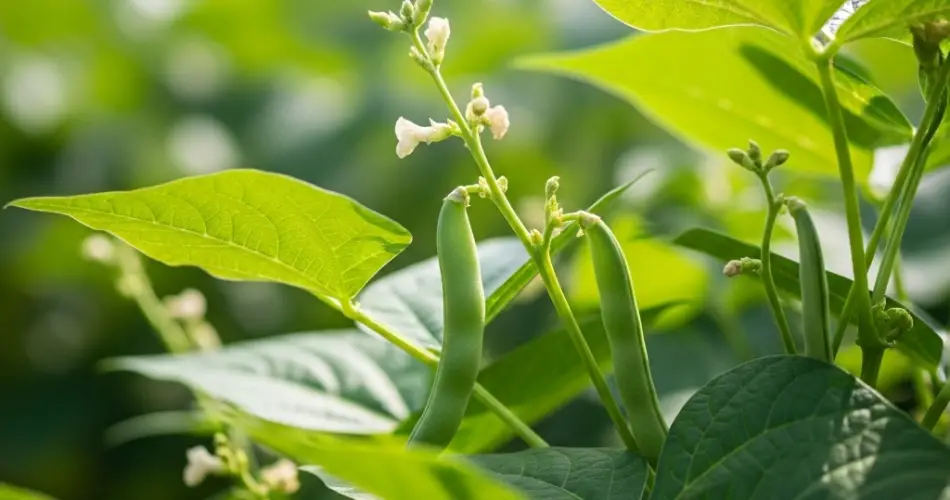Green beans, also known as string beans or snap beans, are one of the most underrated vegetables in the garden and the kitchen. Crisp, bright, and loaded with nutrients, green beans are more than just a classic side dish—they’re a simple, satisfying addition to any meal. Whether steamed, sautéed, roasted, or served raw, green beans offer a delicious way to eat green and feel great.
Nutritional Highlights
Green beans may be light and crunchy, but they are packed with important vitamins and minerals. A one-cup serving of cooked green beans contains only about 44 calories, yet provides a good source of dietary fiber, vitamin C, vitamin A, vitamin K, and folate. They’re also rich in antioxidants like flavonoids and carotenoids, which help fight inflammation and support overall wellness.
In addition, green beans provide small amounts of iron, magnesium, and potassium—essential minerals that support bone health, blood circulation, and muscle function. Thanks to their low calorie content and high fiber, green beans are also great for those looking to manage weight or blood sugar levels naturally.
Digestive and Heart Health Benefits
The fiber in green beans supports healthy digestion by promoting regular bowel movements and feeding the good bacteria in the gut. A fiber-rich diet is associated with reduced risks of colon disorders, and green beans offer a gentle source of insoluble fiber that keeps things moving without being too harsh on the stomach.
Their potassium content also makes green beans a heart-smart food. Potassium helps regulate blood pressure by counteracting the effects of sodium, making green beans a great side dish for anyone mindful of cardiovascular health. Plus, the antioxidants found in green beans help reduce oxidative stress that can lead to heart disease and other chronic conditions.
Simple to Prepare, Easy to Love
One of the best things about green beans is how quickly and easily they can be prepared. Their natural flavor is mild and slightly sweet, which pairs well with a wide variety of herbs, spices, and sauces. Here are some easy ways to enjoy green beans:
-
Steamed: A light steam preserves both flavor and nutrients. Toss with a bit of olive oil, lemon juice, and a pinch of sea salt.
-
Sautéed: Cook with garlic, onions, or mushrooms for a savory side dish. Add a splash of soy sauce or balsamic vinegar for extra depth.
-
Roasted: Toss with olive oil and your favorite seasonings, then roast in a hot oven until slightly blistered for a richer, nutty taste.
-
Blanched and Chilled: Drop green beans briefly into boiling water, then cool in an ice bath. This locks in their bright green color and makes them perfect for salads.
-
Casseroles and Stir-Fries: Green beans add texture and color to mixed dishes and hold up well to heat when cooked properly.
For maximum crunch and freshness, avoid overcooking green beans, which can make them limp and dull in flavor. Aim for a tender-crisp texture that still has some bite.
Don’t Forget the Freshness Factor
When buying green beans, look for pods that are firm, bright green, and free of blemishes. They should snap easily when bent. Avoid beans that are soft, spotted, or overly flexible. If you grow your own, pick them regularly to encourage continued production throughout the season.
Store fresh green beans in the refrigerator, preferably unwashed and in a loosely closed bag to maintain moisture without encouraging rot. They’re best used within 4 to 5 days of purchase for the freshest flavor and texture.
Growing Green Beans at Home
Green beans are one of the easiest vegetables to grow, even for beginner gardeners. They thrive in warm, sunny locations and can be grown in the ground or containers. There are two main types: bush beans, which grow in compact plants and mature quickly, and pole beans, which need a trellis or support and often produce longer, straighter pods.
Beans don’t require heavy fertilization and actually improve soil quality by fixing nitrogen in the soil. With consistent watering and full sun, you can enjoy multiple harvests throughout the growing season.
Harvest beans when the pods are still slender and before the seeds inside become too large. Over-mature beans can become tough and stringy, so pick often and enjoy them fresh.
A Versatile Veggie for Every Table
Green beans are one of those vegetables that can be dressed up for a holiday meal or served simply on a busy weeknight. Their clean flavor and crunchy texture make them a family favorite, and their health benefits make them a smart choice for anyone looking to add more vegetables to their plate.
Whether tossed in a salad, cooked in a hearty casserole, or served as a quick side with olive oil and garlic, green beans bring freshness, color, and nutrition to the table. They’re proof that great food doesn’t have to be complicated—sometimes, it’s as simple as a handful of beans and a few minutes in the kitchen



